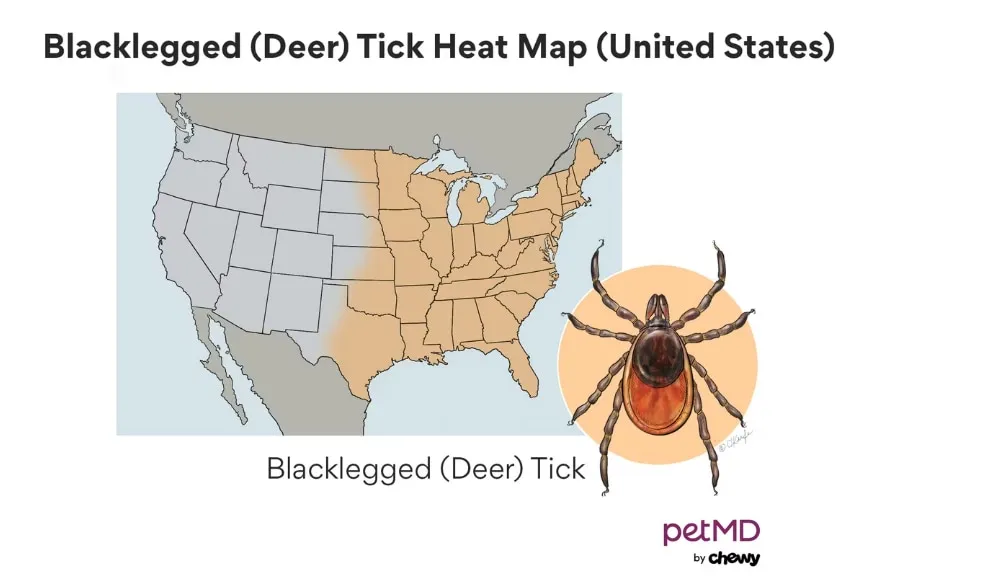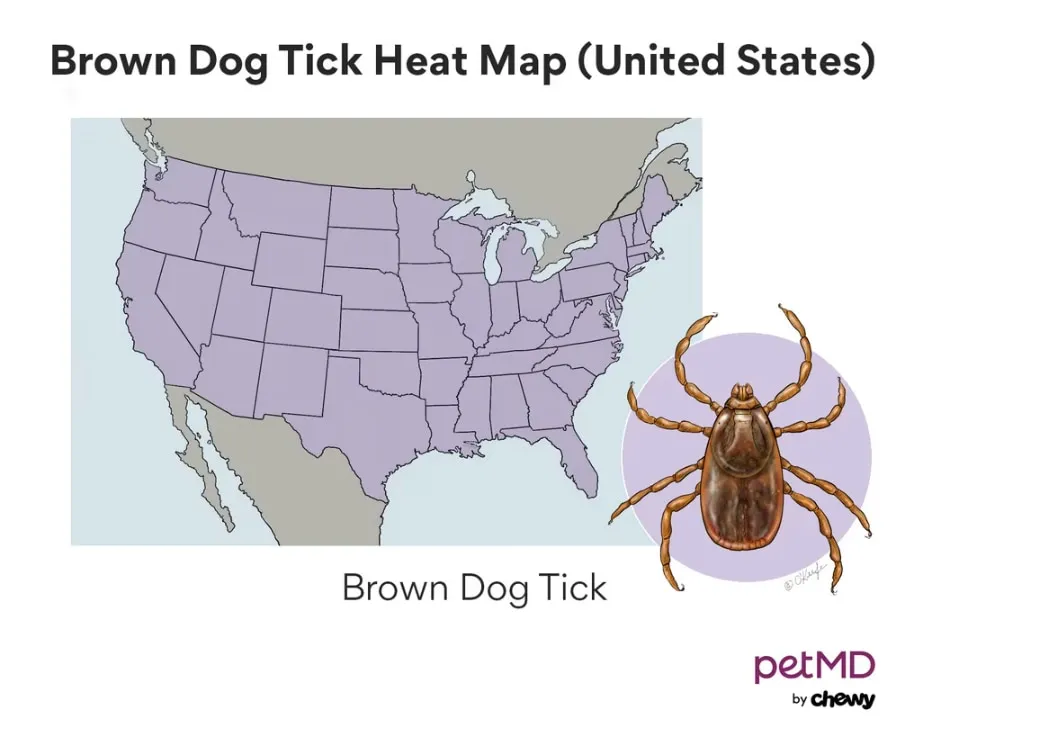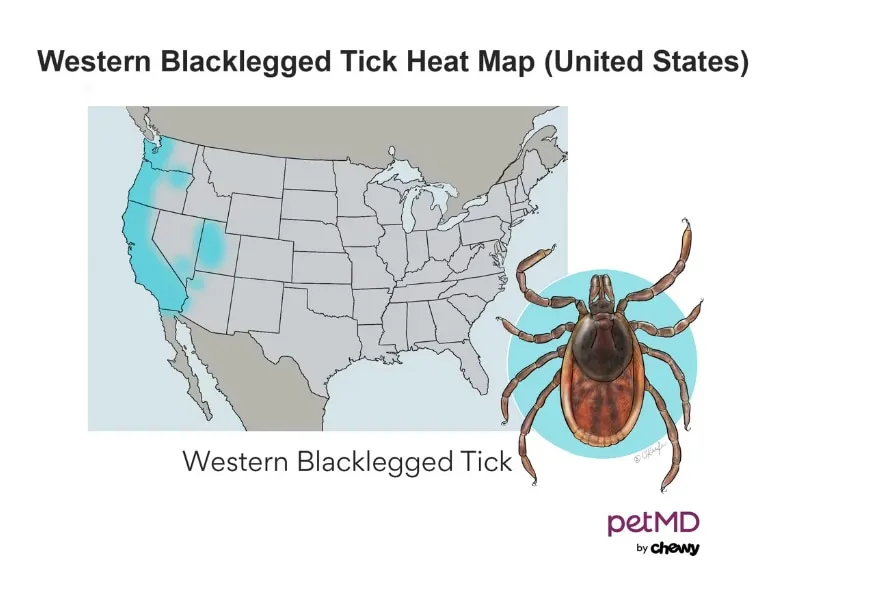Keeping your large dog healthy and comfortable means protecting them from parasites, and one of the most crucial steps is consistent monthly flea and tick preventatives. For larger breeds, effective flea treatment requires careful consideration of product suitability, dosage, and application to ensure complete protection. Understanding the best options for your sizable canine companion is key to their well-being and preventing infestations in your home.
This guide delves into why flea and tick prevention is vital for large dogs, how to choose the right treatment, and highlights popular products, helping you find the most effective Large Dog Flea Treatment.
The Importance of Flea and Tick Prevention for Large Dogs
Fleas and ticks are external parasites that feed on your dog’s blood, directly impacting their health. For large dogs, an infestation can be particularly challenging due to their size, making thorough inspection and treatment more difficult. The sheer volume of their coat can hide numerous parasites, and a heavy infestation can lead to significant health issues.
Flea bites can cause severe allergies, dermatitis, anemia, intense itching, and secondary skin infections. Ticks are even more dangerous, capable of transmitting infections, causing abscesses, paralysis, and in severe cases, even death. Diseases such as Lyme disease, Ehrlichiosis, Anaplasmosis, and Rocky Mountain Spotted Fever are common tick-borne illnesses that can severely affect large breeds. Some of these diseases can also be transmitted to humans, highlighting the critical need to keep your large dog free of these pests. Due to their size and often greater outdoor exposure, large dogs can inadvertently bring more parasites into the home, increasing the risk for the entire household.
When Do Large Dogs Need Flea and Tick Treatment?
Fleas and ticks are resilient and can thrive in diverse environments year-round, not just during warmer months. This is particularly true for large dogs who often spend more time outdoors, exploring various terrains where parasites are abundant. Therefore, it is crucial to maintain year-round flea and tick prevention for your large dog, starting from when they are puppies (typically 8 weeks old, always check product labels for specific age/weight guidelines). Continuous treatment ensures constant protection against these disease-carrying pests throughout their life.
Choosing the Right Flea and Tick Combination Medicine for Your Large Dog
Selecting an appropriate large dog flea treatment involves more than just picking a brand. Products come as pesticides, repellents, or growth inhibitors, each targeting parasites at different life stages. Many preventatives are effective against a broad spectrum of parasites, not just fleas. Combination products often contain multiple active ingredients to tackle different types of pests, including ticks, heartworms, skin and ear mites, and intestinal parasites.
For example, a product like Credelio Quattro offers broad protection against six types of parasites: fleas, ticks, heartworms, roundworms, hookworms, and tapeworms. When considering options for your large dog, always consult your veterinarian to ensure the product is a suitable and safe fit. They can provide professional advice based on your dog’s specific health profile and lifestyle.
Before making a decision, review the product label carefully and discuss the following with your veterinarian:
- Species and Weight Range: Ensure the product is specifically for dogs and within the correct weight range for your large breed. Underdosing or overdosing can be ineffective or dangerous. For very large or giant breeds, sometimes multiple doses or specific formulations are needed.
- Parasite Protection: Confirm it protects against the specific parasites prevalent in your area (fleas, various tick species, heartworms, etc.).
- Administration Guidelines: Understand whether it needs to be given with food, how often it should be administered, and how long it takes to become effective.
- Post-Application Care: Know how soon you can bathe your large dog after topical application without compromising efficacy.
- Safety Concerns: Be aware of any potential side effects or safety warnings, especially for large breeds which might metabolize certain drugs differently.
- Adverse Reactions: Know what steps to take in case of an adverse reaction.
1. Application Method
Flea and tick preventatives for large dogs typically come in two main forms:
- Oral: These are chewable tablets ingested by your dog. Oral treatments are often easy and convenient for dog parents, as they can be given like a treat. For a large dog, ensuring they consume the entire tablet is vital for efficacy. This method avoids the mess of topical solutions and is unaffected by bathing or swimming.
- Topical: These are liquids applied to the skin, usually between the shoulder blades or down the back. Topical preventatives can be a good option for picky eaters or dogs with sensitive stomachs. However, for large dogs, ensuring full skin contact across their larger body surface can be tricky, and the product needs time to dry. If you have small children or other pets, care must be taken to prevent them from touching or licking the application site. Topical treatments are also less ideal for large dogs that frequently swim or require regular baths, as water can diminish the product’s effectiveness.
2. Geography
Different geographic regions harbor different local parasite populations, including various species of fleas and ticks. Your large dog’s exposure risk can vary significantly based on where you live. The Companion Animal Parasite Council (CAPC) is an excellent resource for identifying parasites prevalent in your specific area. This information is crucial for selecting a flea and tick product that offers comprehensive protection against the local threats. For instance, some tick species that carry specific diseases might be more common in wooded areas, which large dogs often frequent.
 Tick on dog fur
Tick on dog fur
3. Access to the Outdoors
Consider the types of outdoor environments your large dog frequents. Dog parks, hiking trails, wooded areas, parks, dense bushes, and even your backyard can be havens for fleas and ticks. Large working breeds or active dogs that spend extensive time in fields or highly vegetated areas have a significantly higher risk of parasite exposure.
Even if your large dog primarily stays indoors, fleas can still find their way in through window screens, on other pets, or even on your clothing and shoes. Veterinarians universally recommend year-round flea and tick prevention for all dogs, regardless of their outdoor access, to ensure comprehensive protection.
4. MDR-1 Gene
Certain large dog breeds, such as Collies, Australian Shepherds, and Shetland Sheepdogs, may carry a gene mutation called MDR-1. This mutation affects their ability to metabolize and break down certain medications, potentially leading to adverse reactions. Many veterinarians recommend testing at-risk breeds for the MDR-1 gene. While many parasite preventative manufacturers have tested their products for safety on dogs with the MDR-1 mutation and found no adverse effects, it’s always best to discuss this with your vet, especially when choosing a large dog flea treatment.
 Several ticks on fur
Several ticks on fur
5. Lifestyle
While no specific breed is inherently more susceptible to fleas or ticks, a dog’s lifestyle significantly influences their risk. Large working dogs, herding dogs, or hunting breeds often spend the majority of their day outdoors in environments conducive to parasites. In contrast, companion large breeds that prefer indoor living with only occasional outdoor excursions may have a lower but still present risk. Your dog’s daily routine should factor into your choice of flea and tick preventative, potentially opting for more robust protection if they are highly active outdoors.
6. Life Stage
When selecting a large dog flea treatment, your dog’s life stage is a critical consideration. While many large dog breeds start life as small puppies, most flea and tick preventatives have a minimum age of 8 weeks and a minimum weight requirement. Always check the package insert for confirmation. Some products, like Revolution Topical Solution, are specifically formulated for young puppies and can be used as early as 6 weeks of age, but these are often for smaller weights and may not be immediately applicable to what will become a large breed. As your large breed puppy grows, ensuring they transition to the correct weight-based product is crucial. For elderly large dogs, their health status might also influence the choice of medication.
7. Medical Conditions
Certain classes of preventatives, particularly isoxazolines, should be used with extreme caution in large dogs with a history of seizures or other neurologic diseases. These medications may potentially trigger or worsen seizures in predisposed individuals.
No preventative should be used without thorough discussion with your veterinarian if your large dog:
- Has previously had an allergic reaction to a medication.
- Is currently sick or underweight.
- Is pregnant, nursing, or planned for breeding.
It’s crucial to find a best large dog flea and tick treatment that aligns with their overall health. If your large dog is dealing with other conditions, like needing kidney medicine for dogs, your vet’s guidance is even more vital to prevent drug interactions or complications.
 Close-up of a tick on fur
Close-up of a tick on fur
Over-the-Counter vs. Prescription Flea and Tick Medicine for Large Dogs
When deciding on a large dog flea treatment, you’ll encounter both over-the-counter (OTC) and prescription options.
Over-the-Counter Flea and Tick Products
OTC flea and tick preventatives do not require a veterinarian’s prescription and are widely available online and in pet retail stores, including options you might find as petco flea treatment for dogs. While convenient, if you choose an OTC product for your large dog, always consult your veterinarian beforehand. They can help ensure it’s a safe and effective choice, especially given the various factors unique to larger breeds.
Prescription Flea and Tick Products
Prescription flea and tick preventatives require a prescription from your veterinarian and generally cost more than OTC options. Most veterinarians recommend prescription products because they are often more effective, thoroughly tested, and have a higher safety profile for your dog. Your vet can provide tailored recommendations, especially crucial for a large dog flea treatment where precise dosing and efficacy are paramount.
Popular Large Dog Flea Treatment Products
Many flea and tick products are formulated with weight-based dosing, ensuring large dogs receive an appropriate and safe amount of active ingredients. Here’s a look at popular options, highlighting their relevance for large breeds:
Advantage
- Advantage II: A topical monthly product containing imidacloprid and pyriproxyfen. This fast-acting combination kills all forms of fleas and chewing lice within hours. Important: It provides no tick prevention. Advantage II is suitable for dogs over 7 weeks old and weighing more than 3 pounds, with specific formulations for larger weight categories.
- Advantage Multi: A topical monthly product with imidacloprid and moxidectin. It treats fleas, sarcoptic mange, intestinal parasites (hookworms, roundworms, whipworms), and prevents heartworm disease. It is fast-acting against fleas (within hours), with other parasites taking up to 24 hours. This product does not provide tick prevention. Advantage Multi is for dogs over 7 weeks and more than 3 pounds, available in dosages appropriate for large dogs.
Bravecto
Bravecto comes as a chewable tablet or topical solution, containing fluralaner (an isoxazoline). It is fast-acting, killing fleas within two hours and ticks within 12 hours. Bravecto is effective for up to 12 weeks, which can be convenient for large dog owners compared to monthly treatments. It also helps with demodectic, sarcoptic mange, and ear mites. Bravecto products are available in specific weight ranges, including formulations for very large dogs. As an isoxazoline, use with caution in dogs with a history of seizures, epilepsy, or neurologic disorders.
Comfortis
Comfortis is a chewable tablet containing spinosad, primarily treating fleas. It’s fast-acting, killing fleas within 30 minutes. Dogs and puppies must be 14 weeks or older and weigh over 5 pounds, with specific dosages for large dogs up to 120 lbs. Comfortis is typically administered monthly.
Credelio
Credelio is a chewable tablet with lotilaner (an isoxazoline). It treats fleas and ticks, starting to kill fleas within four hours. Suitable for dogs over 8 weeks old and weighing more than 4.4 pounds, it is administered monthly, with large dog formulations available. Like other isoxazolines, use with caution in dogs with a history of seizures, epilepsy, or neurologic disorders.
Credelio Quattro
Similar to Credelio, Credelio Quattro is a monthly chewable tablet that combines lotilaner (for fleas and ticks) with moxidectin (for heartworms, hookworms, roundworms), praziquantel (for tapeworms), and pyrantel (for hookworms and roundworms). This broad-spectrum product is available for dogs and puppies 8 weeks of age and older who weigh at least 3.3 pounds, offering weight-specific doses for larger dogs. It provides comprehensive protection against common parasites.
Frontline
- Frontline Gold: A topical monthly product with fipronil, (s)-methoprene, and pyriproxyfen. This combination kills fleas, ticks, and chewing lice within hours. Suitable for dogs over 8 weeks old and weighing more than 5 pounds, with larger doses for bigger dogs.
- Frontline Plus: A topical monthly product containing fipronil and (s)-methoprene. It kills fleas, ticks, and chewing lice, though it may take slightly longer than Frontline Gold. For dogs over 8 weeks and weighing more than 5 pounds, with specific weight ranges for large dogs.
- Frontline Shield: A topical monthly product with fipronil, permethrin, and pyriproxyfen. It kills all fleas, ticks, chewing lice, and stable flies, and repels mosquitos, stable flies, and ticks. It starts killing fleas in five minutes and ticks within one hour. For dogs over 9 weeks and weighing more than 5 pounds, with doses for large breeds. Caution: Highly toxic to cats; extreme care is needed in multi-pet households.
K9 Advantix
K9 Advantix II is a topical monthly product containing imidacloprid, permethrin, and pyriproxyfen. This combination repels and kills fleas, ticks, mosquitos, and chewing lice, and also repels biting flies. It begins killing parasites within hours. Suitable for dogs over 7 weeks old and weighing more than 4 pounds, with formulations for various large dog weight classes. Caution: Highly toxic to cats; extreme care is needed in multi-pet households.
Nexgard
Nexgard is a chewable tablet containing afoxolaner (an isoxazoline). It is effective against fleas, deer ticks, American dog ticks, brown ticks, and Lone Star ticks. It can also be used extra-label for sarcoptic and demodectic mange. Nexgard starts to kill fleas within four hours and ticks within 48 hours. This monthly product is for dogs over 8 weeks old and weighing more than 4 pounds, available in appropriate strengths for large dogs. Use with caution in dogs with a history of seizures, epilepsy, or neurologic disorders.
Onguard Plus
Onguard Plus is a topical monthly product with fipronil and (s)-methoprene. It kills all fleas, ticks, sarcoptic mange, and chewing lice. It is suitable for dogs over 8 weeks old and weighing more than 5 pounds, with formulations for large dogs.
Seresto
Seresto is a collar containing imidacloprid and flumethrin. It kills and repels fleas and ticks for eight months, killing fleas within 24 hours and ticks within 48 hours of application. For large dogs that swim or are bathed frequently (more than once monthly), its efficacy may decrease, requiring replacement every five months. The product is for dogs over 7 weeks of age, with sizes specifically designed for large breeds.
Simparica Trio
Simparica Trio is a monthly chewable tablet containing sarolaner (an isoxazoline), moxidectin, and pyrantel. It treats fleas, ticks, roundworms, and hookworms, and prevents heartworm disease. It is also used extra-label to treat demodectic mange, sarcoptic mange, and ear mites. Simparica Trio begins killing fleas and ticks within 12 hours. It’s for dogs over 8 weeks old and weighing more than 2.8 pounds, with formulations covering large and giant breeds. Use with caution in dogs with a history of seizures, epilepsy, or neurologic disorders.
Trifexis
Trifexis is a chewable tablet with spinosad and milbemycin oxime. It’s effective against fleas, hookworms, roundworms, and whipworms, and prevents heartworm disease. It’s fast-acting, killing fleas within 30 minutes, but does not protect from ticks. Dogs and puppies must be 8 weeks or older and weigh over 5 pounds, with dosages tailored for large breeds. For dogs experiencing skin issues, considering a dog skin allergy treatment natural approach might complement their flea treatment.
 Tick on fur, close-up
Tick on fur, close-up
Vectra 3D
Vectra 3D is a topical monthly product with dinitefuran, permethrin, and pyriproxyfen. This combination repels and kills fleas, ticks, mosquitos, chewing lice, sand, biting flies, and some mites. It begins killing parasites within hours. Suitable for dogs over 8 weeks old and weighing more than 5 pounds, with specific weight formulations for large dogs. Caution: Highly toxic to cats; extreme care is needed in multi-pet households. While options exist for various sizes, owners should always avoid using flea medicine for small dogs on a large dog, as the dosage would be insufficient and ineffective.
Conclusion
Effective large dog flea treatment and prevention are cornerstones of responsible pet ownership. Given their size, coat density, and often increased outdoor activity, large dogs require a vigilant and tailored approach to parasite control. From understanding the life cycle of fleas and ticks to selecting the right product based on your dog’s lifestyle, health, and geographic location, every decision contributes to their overall well-being. Always consult your veterinarian to choose the safest and most effective solution, ensuring your beloved large companion remains happy, healthy, and parasite-free. For further reading and to learn more about comprehensive pet care, explore other articles on Dog Care Story.
References
- PetMD. “Best Flea & Tick Medications for Dogs.” Accessed https://www.petmd.com/dog/vet-verified/best-flea-tick-medications-for-dogs.
- PetMD. “Dog Parent Guide to Flea and Tick Season.” Accessed https://image.petmd.com/files/2025-09/PetMD%20ENG%20Version%20-%20Dog%20Parent%20Guide%20to%20Flea%20and%20Tick%20Season%20.pdf?VersionId=f4FjVulvzvA_UqLtk6DU4_5GiGl.a1Ce.
- Companion Animal Parasite Council (CAPC). “Parasite prevalence maps and guidelines.” Accessed https://capcvet.org/.
- Jones, Lauren, VMD. “Flea and Tick Prevention and Treatment for Dogs.” PetMD.
- Note: Specific article URL not directly provided, but inferred as source of original content.
